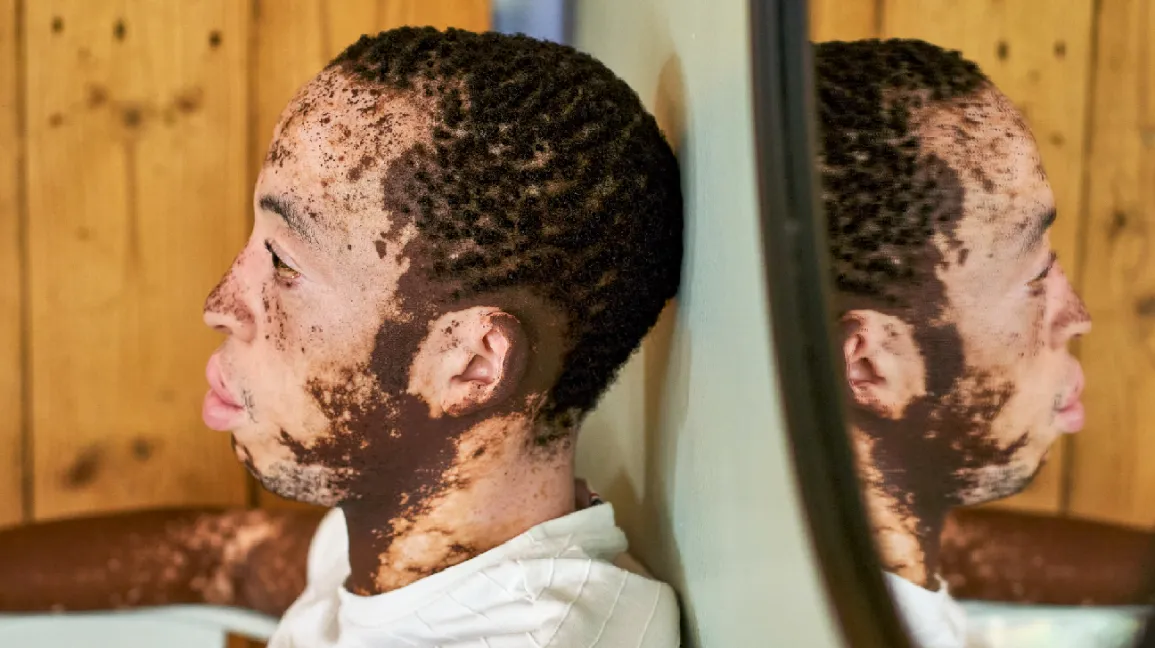June 25th marks the annual commemoration of World Vitiligo Day. A significant occasion dedicated to spreading awareness about vitiligo. It is a chronic skin condition characterized by the depigmentation of patches on the skin. This observance serves as a platform to educate the public. extend support to those affected by vitiligo. an facilitate research to enhance treatment options and comprehension of the condition.
World Vitiligo Day plays a pivotal role in the global campaign to increase understanding, acceptance, and knowledge surrounding vitiligo. By fostering unity among communities worldwide, this observance seeks to dismantle societal stigmas, promote empathy, and propel advancements in the field of medical science. It is an opportunity to recognize and honor the resilience and fortitude of individuals living with vitiligo, while collectively striving for a more inclusive and compassionate society that embraces diversity in all its forms.
What Causes Vitiligo?
When the cells that make melanin, the pigment that gives skin, hair, and eyes their color, are destroyed or cease to function, vitiligo develops. Although the precise origin of vitiligo is yet unknown, a confluence of genetic, immunological, and environmental factors is thought to be responsible. Vitiligo frequently co-occurs with autoimmune diseases such as thyroid illness and diabetes. Sunburn and emotional stress can both cause or make the problem worse.

The Background Of World Vitiligo Day
On June 25, 2011, the international vitiligo community and the nonprofit Vitiligo International Foundation (VIF) established the first World Vitiligo Day. On that day, people honored Michael Jackson, a well-known American singer, songwriter, and performer who suffered from vitiligo. Jackson’s passing in 2009 has increased awareness of the disease and the difficulties experienced by others who have vitiligo. Since its beginning, World Vitiligo Day has grown in popularity and significance, serving as a crucial forum for advocacy and support.
Treatments of Vitiligo
Treatment options aim to manage the symptoms, improve the appearance of the skin, and help individuals cope with the social and psychological impact of vitiligo. Here are some common treatments:
- Topical Corticosteroids: These are commonly prescribed creams or ointments that help to reduce inflammation and slow down the progression of vitiligo. They are most effective when applied to small, localized areas of depigmentation.
- Topical Calcineurin Inhibitors: These medications, such as tacrolimus or pimecrolimus, are applied to the affected areas to help control inflammation and encourage repigmentation.
- Topical Psoralen plus Ultraviolet A (PUVA) Therapy: This treatment involves applying a psoralen medication to the skin followed by exposure to UVA light. Psoralens make the skin more sensitive to light, which stimulates repigmentation.
- Narrowband Ultraviolet B (NB-UVB) Therapy: This involves exposing the affected skin to UVB light of a specific wavelength. Regular sessions of NB-UVB can help to stimulate melanocyte activity and promote repigmentation.
- Excimer Laser: This targeted laser treatment delivers UVB light to specific areas of the skin. It helps to stimulate melanocyte production and improve pigmentation.
- Depigmentation: In cases where vitiligo covers a large portion of the body and other treatments have not been successful. Depigmentation may be an option. This involves using topical creams to lighten the remaining pigmented skin so that it matches the depigmented areas.
The Importance of World Vitiligo Day

World Vitiligo Day Has Several Implications.
First of all, it acts as a way to refute myths and misconceptions about vitiligo. While increasing public knowledge of the disorder. Due to the obvious changes in their appearance, many vitiligo patients experience social stigmatization and discrimination. World Vitiligo Day aims to advance inclusivity and empathy by fostering understanding and acceptance.
Second, this celebration offers a forum for vitiligo sufferers to interact and exchange stories. People worldwide set up support groups, gatherings, and campaigns. To provide a sense of belonging and empowerment among persons who have vitiligo. This aids people in overcoming obstacles caused by the disease and developing resilience.
Additionally, World Vitiligo Day highlights the necessity of ongoing research into the causes, mitigation, and therapy of vitiligo. Topical creams, phototherapy, and surgical procedures are just a few of the therapeutic options. That has been made possible by advancements in medical science and technology. There is now no known treatment for vitiligo. So more research is needed to improve therapeutic outcomes. Along with raising the quality of life for those who have the disorder.







Be First to Comment